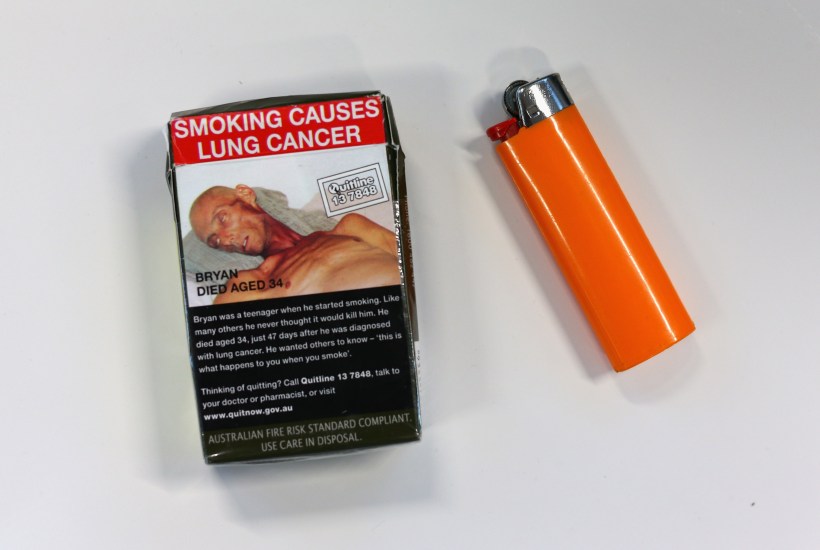Twelve years since they were introduced and nearly six years since branding and logos were removed from cigarette packets, we now find out that Australians are increasingly desensitised to those gnarly graphic health warnings on the packets.
The Cancer Council of Victoria, which supports plain packaging laws and the warnings, released results of its survey on overall awareness of 23 health conditions related to tobacco use on Australian adults aged between 18 and 69. Most of the participants could name less than half of the 23 conditions, despite the ‘in your face’ health warnings featuring mangled organs and grotesque medical conditions which take up most of the packet and were designed to discourage smoking by raising awareness through shock.
Realistically, of course, this was always going to happen. If you show someone the same gruesome image over and over again, they will eventually become desensitised to it. The new findings also call into question claims that plain packaging reforms, introduced by the Gillard government in 2012, made the health warnings ‘more effective’. The government’s own commissioned reviewer of the impact of plain packaging conceded years ago that it was impossible to isolate the effect of the removal of branding and logos from that of the graphic warnings.
Today, we know that more Australians smoke than they did in 2013. It’s time that our politicians stopped listening to ineffective and punitive reforms pushed by taxpayer-funded activists and instead followed the lead of the rest of the developed world by prioritising informed consumer choice, such as through legalising safer alternatives to smoking.
In the UK, where vaping is legal, there has been a steady decline in smoking rates from 2011 to 2017 decreasing from 20 per cent to 15 per cent on average. In a stark comparison, smoking rates in Australia have increased by 21,000 smokers from 2013 (one year after the new cigarette packaging was implemented) to 2016. This is marked the first time in decades that there hasn’t been a reduction in smoking rates. Where Australia historically had a lower rate of smoking than that of the UK and US, our rates are now equal to or higher than our counterparts.
According to a new Public Health England e-cigarette evidence review, e-cigarettes, or vapes, can assist at least 20,000 smokers in quitting for good every year. A 2014 study estimated that over six million Europeans had quit smoking by switching to vaping and that figure is likely to have climbed significantly since then. Unlike cigarettes, vapes do not utilise tobacco which combusts to release tar and carcinogens. They instead work by turning a nicotine solution into vapours, allowing smokers to satiate cravings and mimic the action of smoking without exposure to dangerous toxins.
That nicotine vapes remain illegal in Australia despite the legality of patches, gums and carcinogenic cigarettes themselves shows that our government is not serious about catching up with extensive research and successful public health policy in the rest of the world. Instead, they would rather blindly follow the ineffective recommendations of nanny state activists, ignoring the evidence while millions of smokers march into an early grave.
Instead of patronising smokers by trying to scare them into quitting with horrific images which have now lost their impact to the point where they’re the subject of widespread internet memes, our politicians and bureaucrats should put compassion, choice and public health first. They can do this by adopting a solution which has proven itself in the rest of the Western world by legalising nicotine vaping.
Sarah Ray is a Research Associate with the Australian Taxpayers’ Alliance.
Got something to add? Join the discussion and comment below.
Got something to add? Join the discussion and comment below.
Get 10 issues for just $10
Subscribe to The Spectator Australia today for the next 10 magazine issues, plus full online access, for just $10.


























Comments
Don't miss out
Join the conversation with other Spectator Australia readers. Subscribe to leave a comment.
SUBSCRIBEAlready a subscriber? Log in